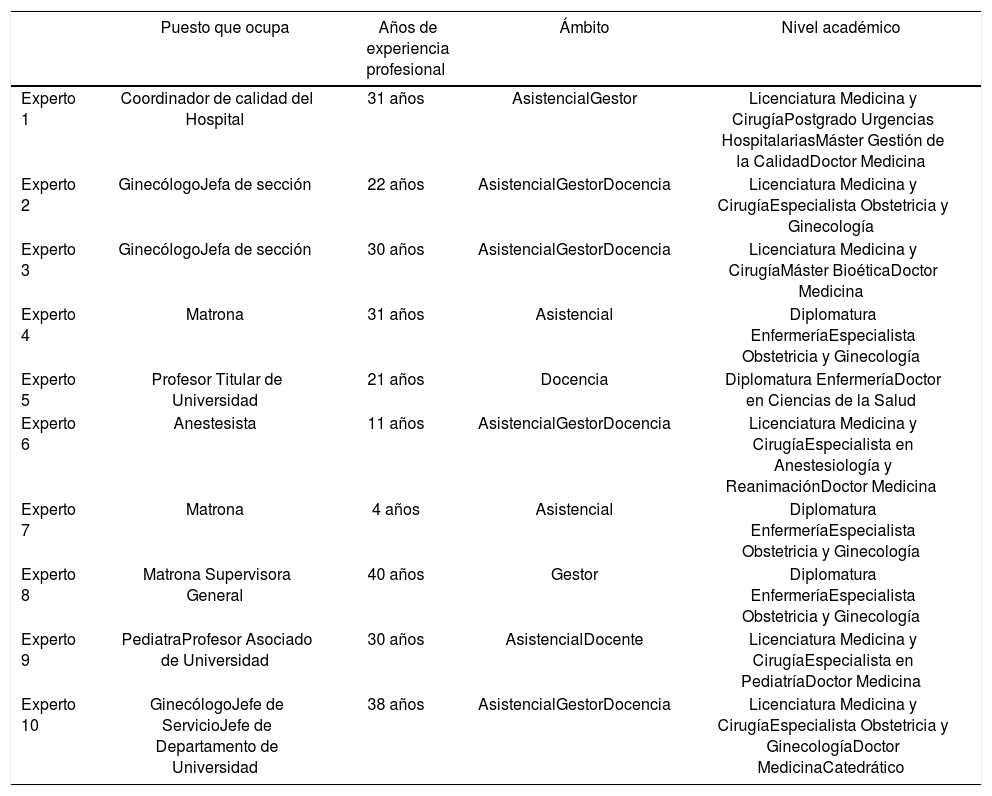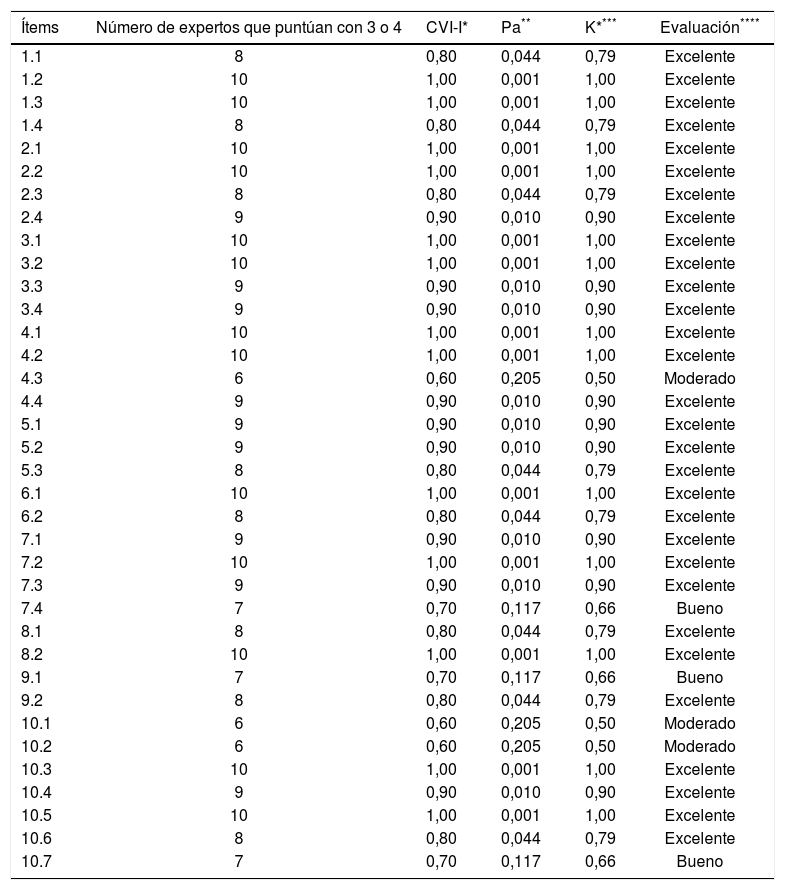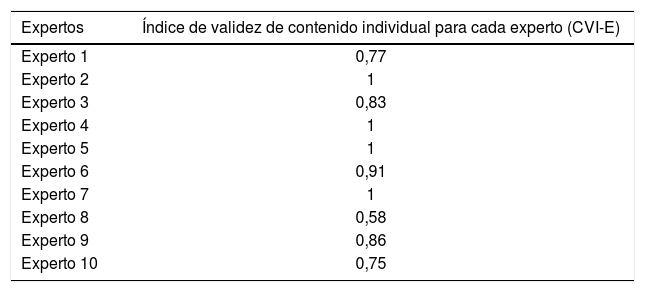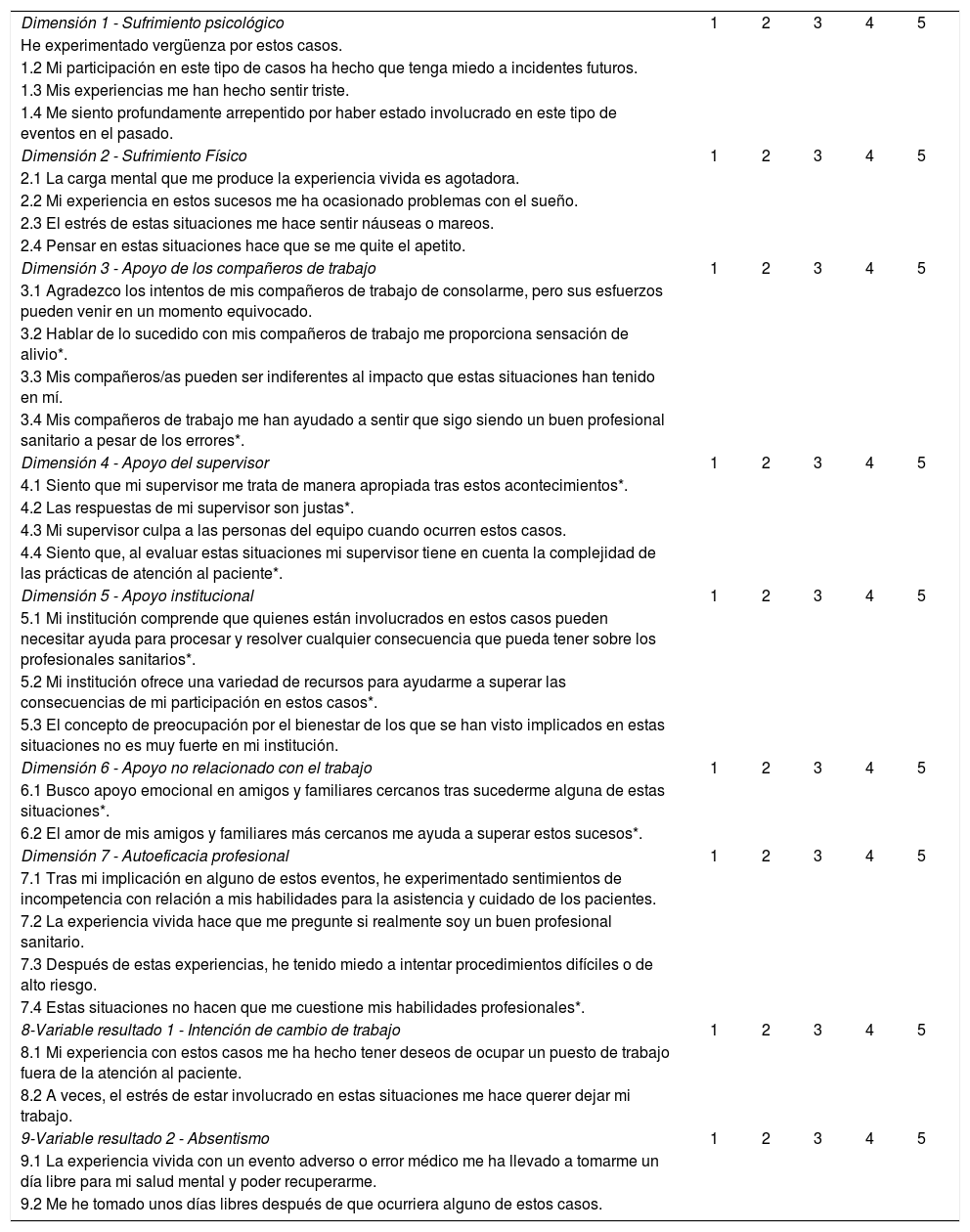Realizar la adaptación transcultural del cuestionario Second Victim Experience and Support Tool (SVEST) al contexto español, así como evaluar la validez de contenido.
MétodoTraducción y adaptación transcultural de un instrumento de medida mediante la traducción y retrotraducción y pilotaje con la participación de 20 profesionales sanitarios. La validación de contenido se realizó con la participación de diez expertos. Se calculó la validez de contenido de cada ítem (CVI-I), índice de validez de contenido por experto (CVI-E) y la validez de contenido total (CVI-T) para el cuestionario. Se realizó corrección del probable acuerdo al azar y el cálculo estadístico del Kappa modificado para cada ítem del instrumento.
ResultadosEl instrumento final obtenido (SVEST-E) posee un CVI-Total de 0,87 y consta de 36 ítems totales, subdivididos en siete dimensiones, dos variables resultado y una sección de formas de apoyo, manteniendo la misma estructura de que el cuestionario original. Treinta ítems mostraron una CVI-I con valores por encima de ≥°0,79.
ConclusionesEl cuestionario SVEST-E preserva la equivalencia con el original y es un instrumento con una adecuada validez de contenido para medir la experiencia de segundas víctimas en los profesionales sanitarios en España.
To carry out a cross-cultural adaptation of the Second Victim Experience and Support Tool (SVEST) questionnaire to the Spanish context, and to evaluate its content validity (CVI).
MethodsThe translation and cultural adaptation of a measuring instrument by means of translation and back translation conducted through the participation of 20 health professionals. The content validation was carried out through the participation of 10 experts. The content validity of each item (CVI-I), the content validity index per expert (CVI-E) and the content validity total (CVI-T) were calculated for the questionnaire. Corrections were carried out for probable random agreement and the statistical calculation Kappa (K*) modified for each item of the instrument.
ResultsThe final instrument obtained (SVEST-E) has a CVI-Total of 0.87 and consists of 36 total items, subdivided into 7 dimensions, 2 outcome variables and a support option section maintaining the same structure as the original questionnaire. Thirty items had a CVI-I with values over ≥̊0.79.
ConclusionsThe SVEST-E questionnaire is an equivalent of the original and is an instrument that could help to evaluate the second victim experiences of healthcare professionals in our country. It is an instrument with adequate content validity to measure the experience of second victims in health professionals in our country.











